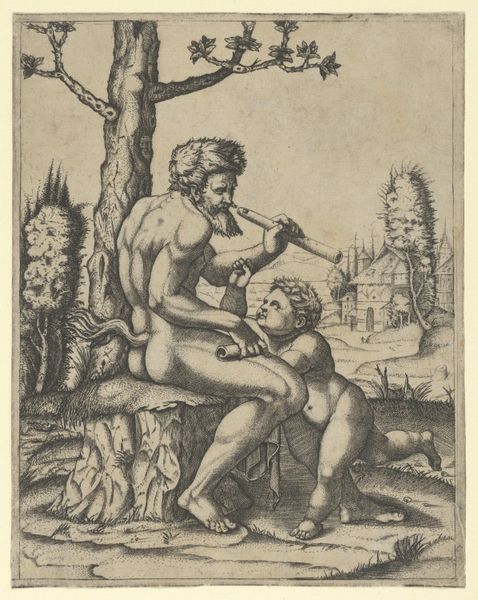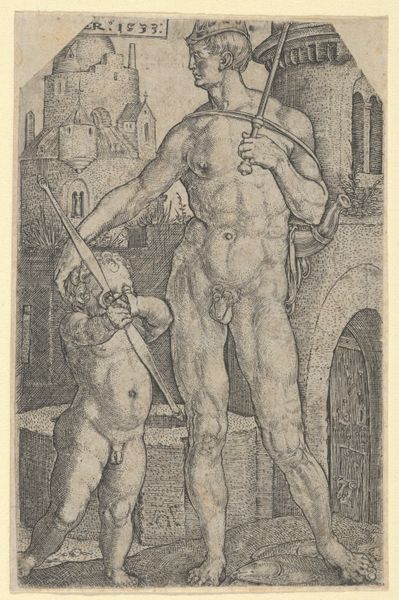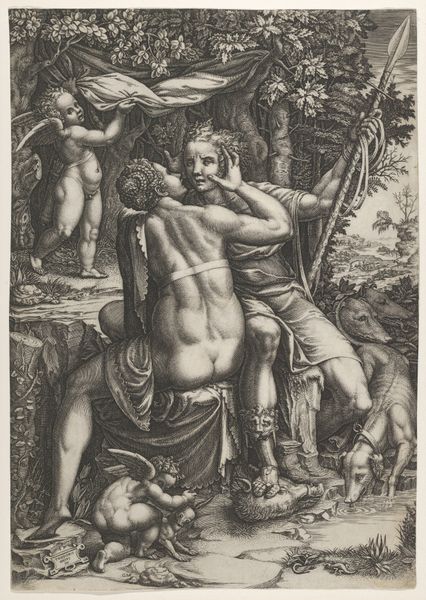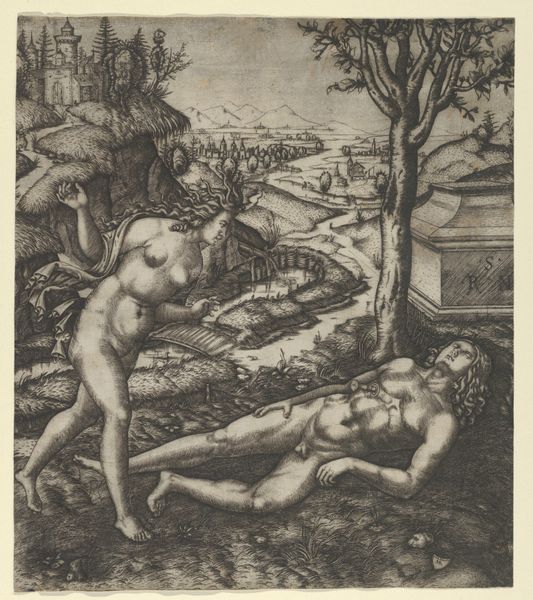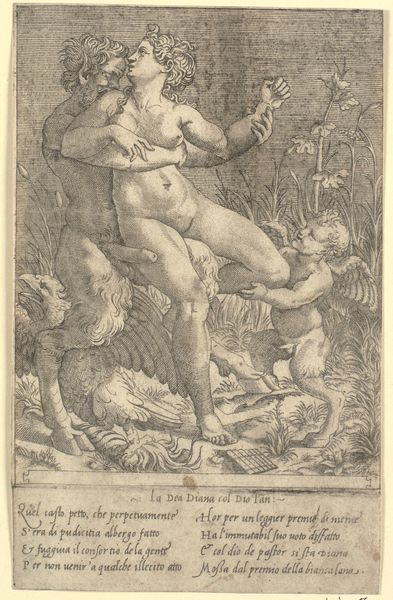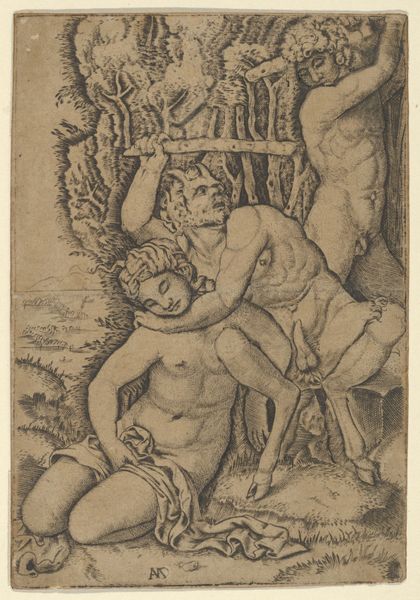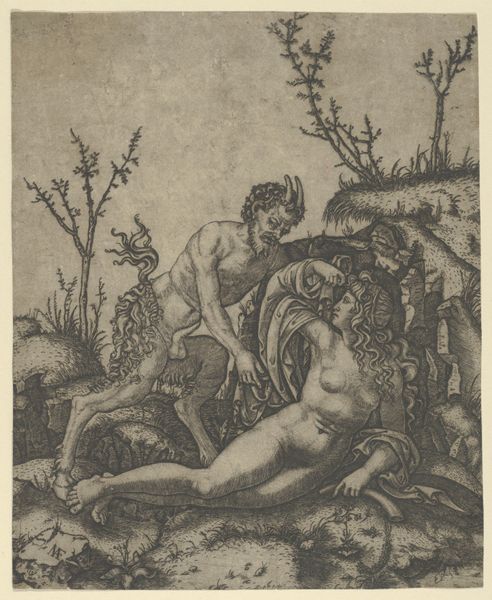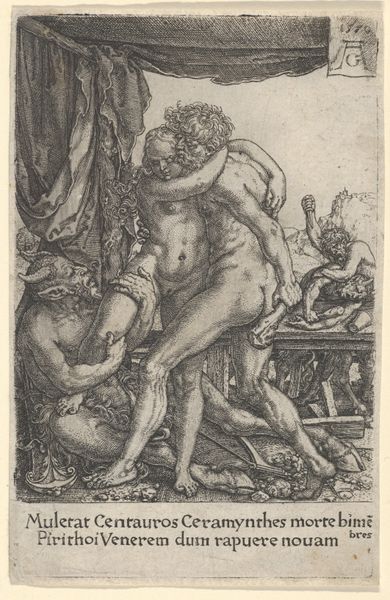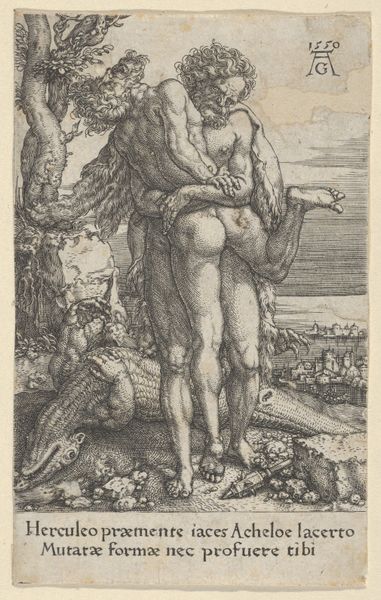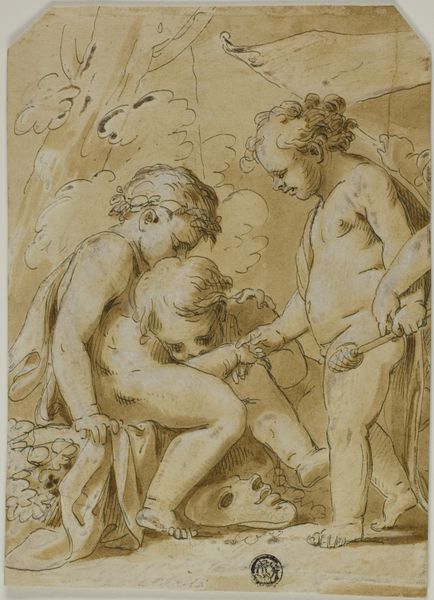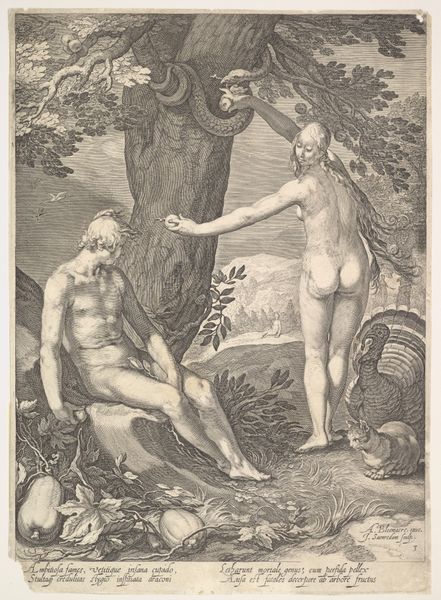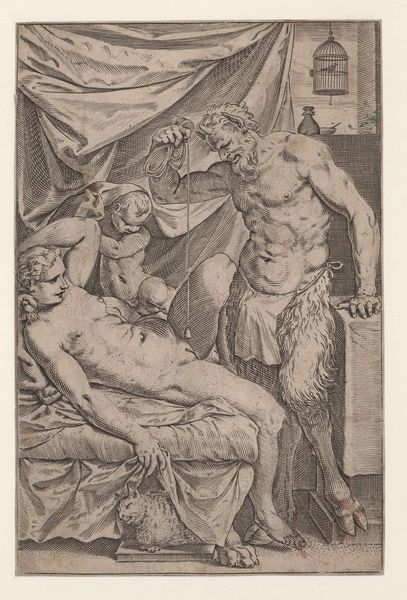
Dimensions: sheet (trimmed to plate mark): 11.8 x 7.8 cm (4 5/8 x 3 1/16 in.)
Copyright: National Gallery of Art: CC0 1.0
Curator: This is Lucas van Leyden's engraving, "The Fall of Man," created in 1529. Look closely at the intricate linework. What strikes you immediately? Editor: The sheer vulnerability. The figures, Adam and Eve, are rendered with such painstaking detail, but their expressions seem to convey an unsettling anticipation of something lost. Curator: Van Leyden uses the engraving technique masterfully, creating a textured surface and subtle gradations of light and shadow. Notice how the lines define form, creating depth and volume in their bodies and the surrounding landscape. Editor: Absolutely, the technical skill is undeniable. But consider the power dynamics at play. Eve, seated, receives the apple, a subtle acknowledgement of female agency that unsettles the established patriarchal interpretations. The serpent’s almost comical face seems to mock this pivotal moment. It speaks volumes about how women have been unfairly blamed and chastised. Curator: An intriguing take. Looking at the formal composition, though, notice the balance. Adam stands rigidly upright, while Eve is in a more relaxed, almost yielding posture, with the serpent forming a sinuous curve in the tree. This interplay of vertical and curvilinear elements lends a visual tension, echoing the thematic conflict. Editor: Yes, and in considering this formal tension, think of the anxieties surrounding free will, gender and morality present within 16th century Europe. To depict such an evocative scene with two nude figures, holding the symbolic fruit offered by an anthropomorphic animal... that in itself could have been perceived as transgressive and subversive. Curator: That historical perspective allows a richer understanding of the piece beyond mere aesthetics. Seeing how social mores find articulation through composition and subject matter illuminates how a print can become an essential artifact. Editor: Exactly! Recognizing that artistic creation occurs in social conditions acknowledges its relevance across time periods and cultures. I am walking away having reassessed my beliefs on tradition, patriarchy and creation myths. Curator: I agree. And seeing how line, shape, and balance interact to intensify the emotional impact is a satisfying discovery too.
Comments
No comments
Be the first to comment and join the conversation on the ultimate creative platform.
